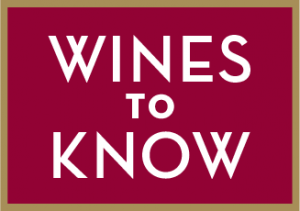
KNUDSEN | Pinot Noir 2015
(Dundee Hills, Willamette Valley, Oregon) $55 (750ml)

We had an employee once who, after tasting a really good pinot noir would always pronounce it “pretty.” What’s a pretty pinot noir? I would always ask. And she would say, Pretty is, well, …pretty. I think this is that wine. It has beguiling aromas of roses and tea and a delicate earthy flavor. Its richness is beautifully faded…like an exquisite old tapestry. Pinots such as this evoke a certain similarity with Burgundies. (Interestingly, Knudsen’s Reserve pinot doesn’t have quite the same elegance). If you love classic pinot noir, this is for you. (14.1% abv)
91 points KM
Available at Knudsen Winery

La Grande Dame, Cristal and Comtes de Champagne are all examples of:
A. Prestige Cuvées
B. Grand Marques
C. Blanc de Blancs
D. Premier Grand Crus
Scroll down for the answer!

“Age gives a wine a sense of beauty and satisfaction that it could never have had before when it was young. In our minds, we intuit that beauty and satisfaction as a feeling of completeness. Because so much of life is incomplete, an old wine is remarkable and moving.”

—Warren Winiarski, founder of Stag’s Leap Wine Cellars

RUBY FIZZ
Historically, Italy’s brilliant ruby-colored sparkling wine, Brachetto, was thought to be an aphrodisiac. (At least that’s what Julius Caesar and Mark Anthony thought, but maybe Cleopatra should be the judge). Anyway, it’s true that Brachetto has undeniable charm. Beautifully floral and fruity with just the right grown-up bitter edge, Brachetto is made from brachetto grapes in the Acqui region of Piedmont, hence its full name: Brachetto d’Acqui. The wine is frizzante (lightly sparkling), low in alcohol, fresh and loaded with raspberry and black cherry flavors. Chilled cold, it’s terrific with a plate of charcuterie some Saturday night before dinner. (I know people who swear it’s molto bene with dark chocolate, but I’ll let you decide on that one). Banfi is the main importer of Brachetto in the U.S., and theirs is a very good one.

Ice
The word ice is usually used along with the word wine, as in ice wine (or eiswein). But ice can be used alone, as in “Riesling Ice.” A wine that is described simply as “ice” is made from grapes frozen artificially. By contrast, all ice wine globally must be made from grapes frozen naturally on the vine. Ice wine is usually expensive—often costing over $100 for a half bottle. By contrast, wines simply labeled ice can cost as little as $20 a half bottle.

Ask Karen
Well, Dudley, I’m guessing you and your friends know how to have a good time. When wine pros use the term “big wine,” they are most often referring to a wine with bold flavors, a full body and a high alcohol content. Such wines, if they’re red, often also possess a lot of tannin, and are therefore highly structured. New World cabernet sauvignons can be big wines, as can merlots, zinfandels and syrahs. Among white wines, New World chardonnays can be quite big. Cheers.
—Karen


A. About 40 percent of all the Champagne sold this year will be sold over the next three months, so it’s a good time to brush up on Champagne terminology. Proprietary names like La Grande Dame, Cristal and Comtes de Champagne are the names that Champagne house gives to their very top wines, which are known as prestige cuvées. The grapes for a prestige cuvée come from the best (and highest-rated) vineyards the house has access to, and the wines usually spend a very long time on the yeast lees–sometimes as much as 10 years. As a result, prestige cuvées are usually both a) exquisite and b) expensive. La Grande Dame, Cristal and Comtes de Champagne are the prestige cuvées of Veuve Clicquot, Roederer and Taittinger, respectively.








